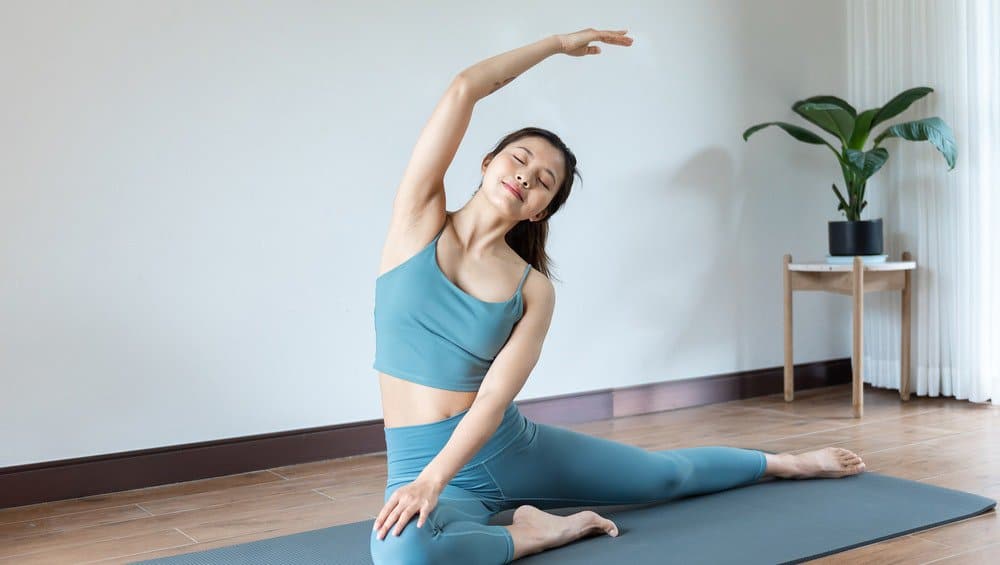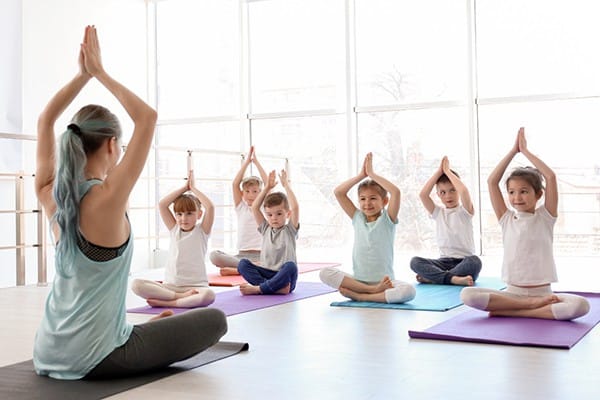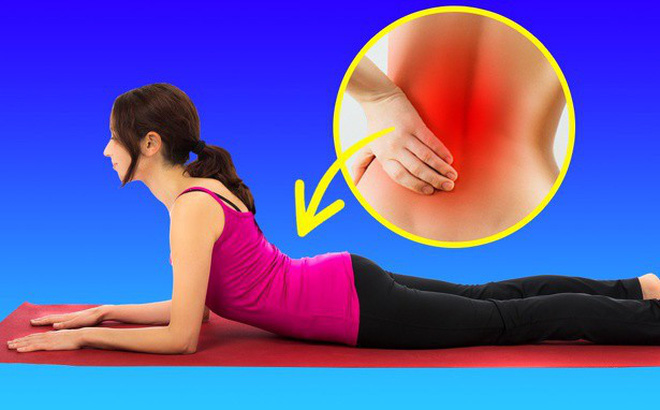Imagine a practice that brings balance to the chaos of modern life, cultivates clarity in a world filled with noise, and rejuvenates both the body and the soul. Yoga is that practice. As you delve deeper into its enchanting world, you will find that it transcends physical fitness, offering an experience that is profoundly holistic and deeply rewarding.
Join the global community of yogis, who have applied this ancient training method, as you too can experience the life-enhancing benefits of Yoga. So, roll out your mat, take a deep breath, and prepare to uncover the secrets that Yoga holds. My name is Linh, a member of LotusBuddhas and I am the one who will share my knowledge about yoga from over 3 years of practicing this method.
What is Yoga?

Yoga is a profound and multifaceted practice that originates from ancient India. It’s much more than just physical postures or exercises; it’s a holistic approach to well-being that integrates the mind, body, and spirit. Yoga aims to promote harmony and balance, offering a pathway to greater health, inner peace, and self-understanding.
The term “yoga” itself comes from the Sanskrit word “yuj,” which means to yoke or unite. This union refers to the connection of the individual consciousness with the universal consciousness, highlighting yoga’s deep spiritual foundation.
Here are some key aspects of yoga:
- Physical Postures (Asanas): These are probably what most people envision when they think of yoga. Asanas are various body positions designed to improve strength, flexibility, and balance. More than mere exercises, these postures are meant to align and calm your body, mind, and spirit in preparation for meditation.
- Breathing Techniques (Pranayama): Pranayama involves various breathing exercises that help control our life force or “prana.” Proper breathing is essential in yoga, as it helps to clear the mind and energize the body, facilitating a deeper state of meditation and relaxation.
- Meditation (Dhyana): Meditation is a fundamental part of yoga practice, focusing on quieting the mind and achieving a state of inner peace and awareness. It’s about being fully present in the moment and observing your thoughts without attachment.
- Philosophy and Ethics: Yoga is underpinned by a rich philosophical framework, including the Yoga Sutras of Patanjali, which outlines the ethical precepts of yoga, paths to spiritual development, and the ultimate goal of yoga—enlightenment.
- Diet and Lifestyle: Yoga encourages mindful eating and a healthy, ethical lifestyle. Many practitioners follow a vegetarian diet to respect all living beings, reduce harm, and maintain a sattvic (pure and balanced) state of being.
When practiced regularly, yoga offers numerous benefits, including reduced stress, improved physical health, enhanced mental clarity, and greater emotional resilience. It’s a deeply personal journey that can vary greatly from one individual to another, inviting practitioners to explore their inner selves and connect with the greater universe.
History of Yoga

The history of yoga is rich and profound, stretching back thousands of years and offering a glimpse into the spiritual and philosophical evolution of ancient civilizations.
The roots of yoga can be traced back to ancient India, around 3000 BCE, with its early references found in sacred texts like the Vedas, particularly the Rigveda. Initially, yoga was more focused on understanding the mind and achieving spiritual insight, with an emphasis on meditation and rigorous moral and ethical standards.
By the time of the Upanishads (circa 800-500 BCE), yoga began to take on a more defined shape, incorporating practices aimed at controlling the body and breath to achieve deeper meditative states. The concept of connecting the individual soul (Atman) with the universal consciousness (Brahman) became central.
The Bhagavad Gita, an epic poem written around 500 BCE, introduced the concept of three types of yoga: Karma Yoga (the yoga of action), Bhakti Yoga (the yoga of devotion), and Jnana Yoga (the yoga of knowledge). These forms of yoga emphasized different paths to reach spiritual realization and liberation (moksha).
However, it was the Yoga Sutras of Patanjali, compiled around 400 CE, that systematically outlined the philosophy and practice of yoga as we know it today. Patanjali’s work describes the eight limbs of yoga (Ashtanga Yoga), which include ethical standards, physical postures (asanas), breath control (pranayama), sensory withdrawal, concentration, meditation, and ultimately, samadhi, a state of ecstasy and union with the divine.
Over the centuries, yoga evolved and diversified, influenced by various philosophical, spiritual, and cultural trends. In the medieval period, tantra yoga emerged, introducing new techniques and the idea that the physical body could be a means to achieve spiritual enlightenment.
The modern era of yoga began in the late 19th and early 20th centuries when yoga masters began traveling to the West, introducing the practice and its benefits to new audiences. Notable figures such as Swami Vivekananda played a crucial role in popularizing yoga in the Western world.
In recent decades, yoga has seen a global resurgence, becoming a popular form of physical exercise while also maintaining its roots in spiritual practice. Today, yoga encompasses a wide range of styles and schools, each with its own emphasis and methods, but all share the common goal of promoting physical, mental, and spiritual well-being.
Benefits of Practicing Yoga
Practicing yoga offers a plethora of benefits that extend far beyond mere physical fitness. As a holistic practice that integrates the body, mind, and spirit, yoga can profoundly transform various aspects of your life. Here’s a deeper dive into the multifaceted benefits of this ancient discipline:
Enhanced Physical Health: Yoga is renowned for its ability to improve flexibility, strength, and balance. Through various asanas (poses), practitioners develop a more attuned and resilient body. Additionally, yoga can aid in alleviating chronic pain, improving posture, and enhancing overall physical stamina and endurance.
Stress Reduction: One of the most celebrated benefits of yoga is its capacity to reduce stress and promote relaxation. The mindful breathing techniques (pranayama) and meditation components of yoga are particularly effective in calming the mind, reducing cortisol levels, and fostering a state of inner peace.
Improved Mental Clarity and Focus: Regular yoga practice helps in sharpening concentration and mental clarity. By cultivating a practice that centers on present-moment awareness, yoga practitioners often experience improved attention spans and focus, which can be beneficial in all aspects of life.
Emotional Well-being: Yoga offers a safe space for emotional release and healing. By connecting with the body and breath, individuals can tap into suppressed emotions, facilitating a process of self-discovery and emotional purification that contributes to enhanced emotional stability and resilience.
Increased Energy and Vitality: Many yoga practitioners report heightened levels of energy and a rejuvenated sense of vitality. The dynamic movements and postures, coupled with focused breathing, can invigorate the body and mind, leading to increased levels of energy throughout the day.
Improved Immunity: Yoga can bolster the immune system by reducing stress and enhancing lymphatic flow, which helps the body to fight off pathogens and detoxify. Certain yoga poses are known to stimulate and support various organs and systems within the body, contributing to overall health and wellness.
Enhanced Self-awareness and Mindfulness: Yoga encourages a deepened sense of self-awareness and introspection, which can lead to greater mindfulness in daily life. This enhanced awareness can foster a deeper understanding of one’s thoughts, emotions, and reactions, paving the way for personal growth and self-improvement.
Spiritual Growth: For those who seek it, yoga offers a pathway to spiritual exploration and enlightenment. The practice can lead to a sense of connectedness with something greater than oneself, promoting spiritual understanding and growth.
Community and Connection: Joining a yoga class or community can provide a sense of belonging and connection with like-minded individuals. This community aspect can be incredibly supportive, offering encouragement and inspiration on one’s yoga journey.
Reference more: Top 10 Benefits of Practicing Yoga.
The Eight Limbs of Yoga
The Eight Limbs of Yoga, often referred to as Ashtanga Yoga, is a philosophical guideline for the yogic journey towards self-realization. This system is attributed to the ancient Indian sage Patanjali, who compiled the Yoga Sutras. Each limb, or “anga,” represents a specific aspect of this comprehensive path.
- Yama: The Yamas are the universal moral and ethical commandments that apply irrespective of culture, country, or context. They include non-violence (ahimsa), truthfulness (satya), non-stealing (asteya), continence (brahmacharya), and non-covetousness (aparigraha). These principles form the foundation of the yogic path, guiding an individual’s conduct in the world.
- Niyama: The Niyamas are the personal disciplines and observances that guide an individual’s inner conduct. These include purity (saucha), contentment (santosha), austerity (tapas), study of the self and scriptures (svadhyaya), and surrender to a higher power (Ishvara Pranidhana). They provide a framework for self-reflection and personal growth.
- Asana: Asanas are the physical postures of Yoga. They were originally developed to condition the body for long periods of seated meditation. Today, they are most commonly associated with Yoga, helping practitioners to increase flexibility, strength, balance, and overall physical health.
- Pranayama: Pranayama is the control and regulation of breath, thereby managing the energy or life force (prana) within the individual. It is a bridge between the external (asana) and internal (meditation) practices of Yoga, influencing both the physical and mental states.
- Pratyahara: Pratyahara refers to the withdrawal or control of the senses. This practice helps to quieten the mind, preparing it for deeper stages of concentration and meditation by reducing sensory distraction.
- Dharana: Dharana is the practice of concentration, where the mind is focused on a single point, object, or idea. It is the initial step in deep meditation and serves as a training ground for the mind.
- Dhyana: Dhyana is meditation or sustained concentration, where the observer, the process of observation, and the observed object become one. It involves an uninterrupted flow of awareness towards the object of concentration.
- Samadhi: The ultimate aim of the Eight Limbs of Yoga, Samadhi is the state of superconsciousness or enlightenment. In this state, the individual consciousness dissolves into the universal consciousness, leading to the realization of the true self, free from illusion and suffering.
The Eight Limbs of Yoga provide a comprehensive path for personal development and spiritual growth. They guide the individual from ethical conduct in the external world to inner disciplines, physical health, energy regulation, sensory withdrawal, concentration, meditation, and finally, to a state of enlightened consciousness.
Different Types of Yoga
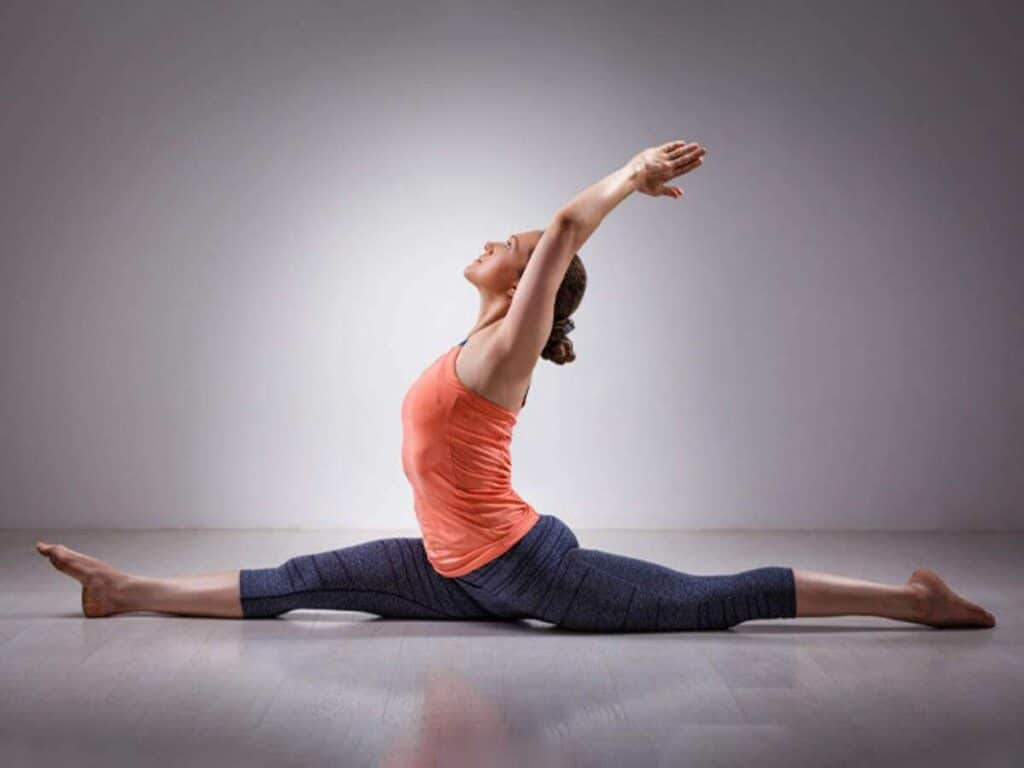
Yoga is a diverse and rich practice with various styles that cater to different preferences and objectives. Each type of yoga offers a unique approach, whether you’re seeking physical challenge, deep relaxation, or spiritual connection. Let’s explore some of the prominent types of yoga that you might encounter:
Hatha Yoga
Often considered the foundation of all yoga styles, Hatha yoga is a gentle practice focusing on basic postures and breath control. It’s an excellent choice for beginners or those seeking a more meditative, slow-paced workout. Hatha classes typically involve a series of asanas (poses) and pranayama (breathing exercises) aimed at aligning and calming the body, mind, and spirit.
Vinyasa Yoga
Known for its fluid, movement-intensive practices, Vinyasa yoga is often called “flow yoga” because of the smooth way the poses run together. It’s more vigorous and athletic than Hatha yoga, with an emphasis on synchronizing breath with movement. Vinyasa is great for those who enjoy a dynamic and physically challenging practice.
Ashtanga Yoga
This is a rigorous style of yoga that follows a specific sequence of postures and is similar to Vinyasa yoga in that it links every movement to a breath. Ashtanga is an intense, physically demanding practice that appeals to those who like a sense of order and progression in their yoga routine.
Iyengar Yoga
Focusing on precision and alignment, Iyengar yoga is excellent for deepening your understanding of the asanas. This style uses various props like blocks, belts, and blankets to assist in achieving the correct alignment. It’s ideal for those recovering from injury or who want to improve their posture and technique.
Bikram Yoga
Practiced in a room heated to 105°F (41°C) with 40% humidity, Bikram consists of a series of 26 poses and two breathing exercises. The heat adds to the intensity and helps to loosen the muscles. This style is suited for those who are looking to sweat and detoxify.
Kundalini Yoga
This is a more spiritual style of yoga that goes beyond physical postures. It combines dynamic breathing, meditation, the chanting of mantras, and movement. Kundalini yoga aims to awaken the energy at the base of the spine and draw it upward through the chakras. It’s an excellent choice for those seeking a more profound spiritual experience.
Yin Yoga
A slow-paced style of yoga with postures held for longer periods, Yin yoga aims to stretch the connective tissues around the joints. This meditative practice allows you to turn inward and focus on your mind as well as your body. It’s a great way to unwind and release tension.
Restorative Yoga
Similar to Yin yoga, Restorative yoga is a gentle, relaxing practice that uses props to support the body in poses, allowing you to hold them for longer and achieve deep relaxation. It’s a perfect style for those looking to de-stress and rejuvenate.
How to Practice Yoga for Beginners
Starting a yoga practice can be a transformative journey that benefits your body, mind, and spirit. As a beginner, it’s important to approach yoga with curiosity and patience. Here are some practical steps to help you embark on your yoga journey:
- Choose the Right Style: As we’ve discussed, there are many different types of yoga. For beginners, Hatha or Iyengar yoga can be great starting points due to their slower pace and focus on alignment. Vinyasa or Ashtanga might appeal to those looking for a more dynamic practice.
- Gather Essential Gear: All you really need to begin is a yoga mat. Choose one with good grip to prevent slipping. As you progress, you might want to invest in additional props like blocks, straps, or a blanket, which can help you modify poses to suit your level.
- Create a Comfortable Space: Find a quiet, comfortable spot where you can practice without interruptions. Ensure there’s enough room to move freely in all directions. Setting a peaceful atmosphere with soft lighting or soothing music can also enhance your practice.
- Start with Basic Poses: Begin with foundational poses like Child’s Pose, Mountain Pose, Downward-Facing Dog, and Warrior I. Focus on learning the correct form and breathing techniques. It’s more beneficial to do a few poses correctly than to rush through many with poor alignment.
- Follow Guided Practices: Initially, it’s helpful to use guided practices from yoga classes, apps, or online videos. This guidance can help ensure you’re performing poses correctly and safely. Look for beginner-focused sessions that introduce the basics at a comfortable pace.
- Listen to Your Body: Yoga shouldn’t cause pain. While it’s normal to experience some muscle soreness, sharp or intense pain is a signal to stop and pull back. Respect your body’s limits and don’t push yourself too hard.
- Practice Regularly: Consistency is key in yoga. Try to practice several times a week, even if it’s just for 10-15 minutes at a time. Regular practice will help you improve more quickly and experience the many benefits of yoga.
- Incorporate Breath Work: Breathing is a central element of yoga. Pay attention to your breath throughout your practice, using it to guide your movements and help you focus and relax.
- Be Patient and Kind to Yourself: Yoga is a personal journey, and everyone progresses at their own pace. Celebrate your progress, no matter how small it seems. Remember, it’s not about perfection but about growth and self-discovery.
- Consider Attending a Beginner’s Class: If possible, attending a class can provide personalized guidance and feedback, helping you learn proper form and technique. Plus, it can be motivating to practice with others.
Trust me, following these tips can make all the difference when starting your yoga journey. With confidence and ease, you’ll establish a strong foundation that sets the stage for a lifelong journey of personal growth and well-being. So, embrace the excitement, push past the nervousness, and take that first step onto the mat. Your body, mind, and soul will thank you for it.
Reference more: 8 Yoga Poses Suitable for Beginners
Risks of Practicing Yoga
Yoga is generally considered a safe and beneficial practice. However, as with any physical activity, it comes with potential risks that should be acknowledged and mitigated to ensure a safe and effective practice. It’s paramount to remember that the essence of yoga is non-harming (Ahimsa), and this principle should guide our approach to the practice.
Physical risks: Yoga involves movement and postures that can place stress on different parts of the body. If not performed correctly, these poses can potentially lead to injuries. The most commonly affected areas include the knees, lower back, shoulders, and neck. Injuries can occur from overstretching, excessive twisting, improper alignment, or pushing beyond one’s capacity.
Health-related risks: Individuals with pre-existing health conditions such as high blood pressure, glaucoma, osteoporosis, or certain heart conditions need to exercise caution when practicing yoga, as certain poses may not be suitable for them. Pregnant women should also seek professional advice and opt for prenatal yoga classes that cater specifically to their needs.
Mental and Emotional risks: For some, yoga’s emphasis on self-awareness and introspection may bring to the surface previously unexplored emotions or traumatic memories. This can be challenging to navigate without the appropriate support.
How to mitigate these risks:
- Guidance: Especially for beginners, learning under the supervision of a certified and experienced yoga teacher is crucial. They can correct your alignment, offer modifications, and ensure you are practicing safely.
- Self-awareness: Cultivate body awareness. Listen to your body’s cues and learn to distinguish between the discomfort of growth and the pain of potential injury.
- Pacing: Remember, yoga is not a race. Progress at your own pace and do not push your body beyond its limit. Embrace the principle of ‘Ahimsa’ (non-violence) towards oneself.
- Preparation: Warm up properly before diving into complex asanas, and maintain a regular practice to build strength and flexibility gradually over time.
- Personal health: Always consult with a healthcare provider before starting a new physical practice, especially if you have any pre-existing health conditions.
The risks, while present, can be mitigated significantly with the right approach and attitude. You have to always remember, the journey of yoga is not about performing the perfect pose but about cultivating harmony between mind, body, and spirit.
8 Best Yoga Centers in the World
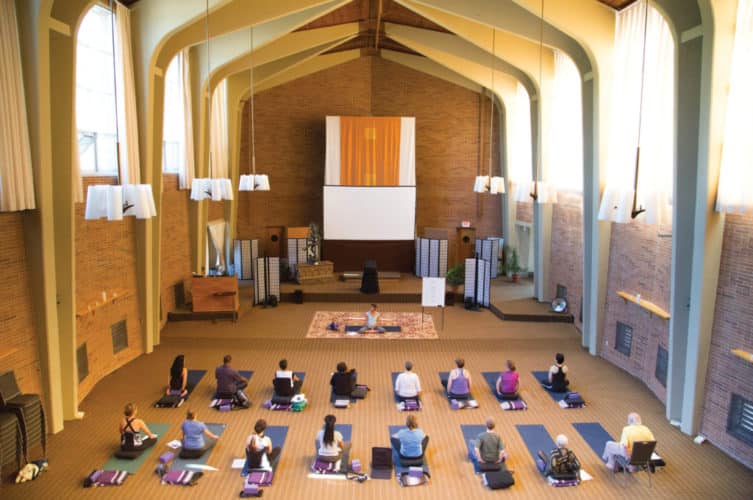
Exploring different yoga centers can be a transformative part of your yoga journey, offering unique experiences that deepen your practice and expand your understanding of yoga. While there are countless amazing yoga centers worldwide, here are eight renowned ones that stand out for their quality, setting, and approach:
- Parmarth Niketan, Rishikesh, India: Nestled in the spiritual town of Rishikesh, along the banks of the Ganges, Parmarth Niketan is one of the largest yoga centers in India. It offers a vast array of yoga programs, spiritual retreats, and meditation classes, providing an authentic and immersive experience in the birthplace of yoga.
- The Yoga Barn, Bali, Indonesia: Located in the serene town of Ubud, The Yoga Barn is a well-known yoga center set amidst lush greenery and tranquil surroundings. It offers a diverse range of classes and workshops, catering to all levels, and is known for its welcoming community and holistic wellness approach.
- Kripalu Center for Yoga & Health, Massachusetts, USA: As one of the largest yoga and holistic health centers in the USA, Kripalu offers a variety of programs, workshops, and teacher trainings. Its emphasis on personal growth and self-discovery makes it a nurturing place for both beginners and advanced practitioners.
- Isha Yoga Center, Tamil Nadu, India: Founded by Sadhguru, the Isha Yoga Center is a vibrant spiritual destination set at the foothills of the Velliangiri Mountains. It offers a range of programs and practices, including the well-known Inner Engineering and Hatha Yoga, in a peaceful and powerful setting.
- Yogaville, Virginia, USA: Yogaville is a unique yoga community and retreat center that offers an immersive experience in a tranquil, spiritual environment. It’s home to the LOTUS (Light Of Truth Universal Shrine) and provides a variety of yoga practices, workshops, and programs.
- Sivananda Ashram Yoga Retreat, Bahamas: Situated on Paradise Island, this ashram offers a serene getaway where individuals can deepen their practice in a beautiful, natural setting. The center follows the teachings of Swami Sivananda and offers yoga classes, meditation sessions, and spiritual programs.
- Ashtanga Yoga Research Institute, Mysore, India: For those interested in Ashtanga Yoga, this institute in Mysore is considered one of the best places to study. It adheres to the teachings of K. Pattabhi Jois, offering an authentic and intensive experience in Ashtanga Yoga practice and philosophy.
- Omega Institute, New York, USA: Located in the picturesque Hudson Valley, Omega offers a variety of workshops, retreats, and classes in yoga and other wellness practices. Its beautiful campus and community-focused environment make it a nurturing place for personal and spiritual growth.
These centers are celebrated for their contributions to the global yoga community, providing spaces where individuals can learn, grow and transform. Whether you’re looking for a traditional ashram experience, a luxury retreat, or a community-oriented center, these popular locations offer something for every yogi.


